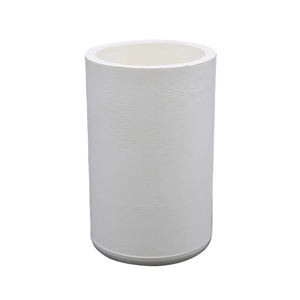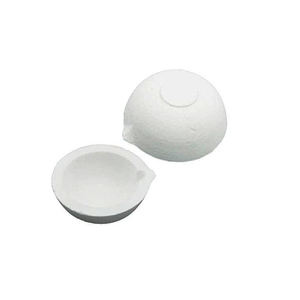Professional industry ceramic supplier, silicon nitride, silicon carbide, aluminum nitride and any other kinds of ceramics.
PRODUCT PARAMETERS
Description
Overview of Precious Metal Analysis Assaying Ceramic Crucibles Fire Clay Fire Assay Crucibles and Magnesite Cupels
Precious Metal Analysis Assaying Ceramic Crucibles Fire Clay Fire Assay Crucibles and Magnesite Cupels are specialized containers designed for withstanding extremely high temperatures in laboratory and industrial settings. They are essential for processes such as melting, calcining, and heat-treating a wide variety of materials, including metals, glasses, and chemicals. Our crucibles are engineered for superior thermal stability and chemical resistance, ensuring purity and reliability in the most demanding applications.
Features of Precious Metal Analysis Assaying Ceramic Crucibles Fire Clay Fire Assay Crucibles and Magnesite Cupels
-
Exceptional Thermal Shock Resistance: Withstands rapid temperature changes without cracking, ensuring durability and a long service life.
-
High-Temperature Stability: Maintains structural integrity at extreme temperatures, often exceeding 1500°C.
-
Excellent Chemical Inertness: Resists corrosion and reaction with molten metals, acids, and aggressive chemical fluxes.
-
High Purity & Low Contamination: Manufactured from premium materials to prevent sample contamination during sensitive processes.
-
Optimized Thermal Properties: Designed for efficient heat transfer and consistent performance in furnace environments.
-
Robust Mechanical Strength: Offers good resistance to physical impact and abrasion during handling and use.
Specifications of Precious Metal Analysis Assaying Ceramic Crucibles Fire Clay Fire Assay Crucibles and Magnesite Cupels
Rare-earth Element Analysis Appraising Crucibles and Cupels .
These items are for rare-earth element analysis. They are essential tools for fire assay job. Fire assay is a reputable technique to find out just how much gold, silver, or platinum group metals remain in a sample.
We make Fire Assay Crucibles from unique fire clay. This clay handles intense warm quite possibly. Crucibles hold the sample mix during the high-temperature combination action. They should be tough. They should stand up to chemical strike from the change. They have to also maintain their form under tension. Our crucibles are recognized for purity. Low degrees of trace elements imply less opportunity of contaminating your precious metals. This gives you accurate results. We offer various dimensions to match your heating system and example quantity.
Magnesite Cupels are made use of following. After blend, you put the liquified material right into a cupel. The cupel absorbs the lead oxide and various other base metal oxides. This leaves the precious metal bead behind. Magnesite is the primary material. It makes solid, porous cupels. This porosity is crucial. It lets the cupel absorb the litharge efficiently. Good cupels are vital for tidy splittings up. They assist you get a pure grain for accurate evaluating and analysis. We supply cupels in typical dimensions. They fit many assay furnaces. Regular quality is key.
Applications of Precious Metal Analysis Assaying Ceramic Crucibles Fire Clay Fire Assay Crucibles and Magnesite Cupels
Fire assay crucibles and cupels are vital devices in rare-earth element analysis. Laboratories rely on them for accurate outcomes. The procedure starts with fire assay. This is a conventional approach for discovering gold, silver, and platinum team steels in samples. Ceramic crucibles made from fire clay hold the sample throughout the initial high-temperature thaw. These crucibles stand up to intense heat. They do not respond chemically with the sample mixture. This is vital. The crucible product need to be inert. Fire clay gives this security at heats.
After melting in the crucible, the resulting steel grain requires further splitting up. This is where magnesite cupels been available in. Cupels are little permeable cups. The metal grain is placed onto the cupel. The cupel goes into a heating system at extremely high warm. The cupel soaks up base metal oxides and various other pollutants. Rare-earth elements like gold and silver do not take in. They remain on the cupel surface. Magnesite is a preferred material for cupels. It provides outstanding absorption ability. It preserves its form under the extreme warmth. Magnesite cupels supply regular results. They are vital for exact last measurements in fire assay. Laboratories depend on these tools. They are fundamental for appraising precious metals accurately.
Company Profile
Tanki New Materials Co.Ltd. focus on the research and development, production and sales of ceramic products, serving the electronics, ceramics, chemical and other industries. Since its establishment in 2015, the company has been committed to providing customers with the best products and services, and has become a leader in the industry through continuous technological innovation and strict quality management.
Our products includes but not limited to Aerogel, Aluminum Nitride, Aluminum Oxide, Boron Carbide, Boron Nitride, Ceramic Crucible, Ceramic Fiber, Quartz Product, Refractory Material, Silicon Carbide, Silicon Nitride, ect. please feel free to contact us.

Payment Methods
T/T, Western Union, Paypal, Credit Card etc.
Shipment Methods
By air, by sea, by express, as customers request.
5 FAQs of Precious Metal Analysis Assaying Ceramic Crucibles Fire Clay Fire Assay Crucibles and Magnesite Cupels
What are these crucibles and cupels for?
These tools help analyze precious metals like gold and silver. They’re used in fire assaying. That’s a method to measure metal purity and content. Crucibles hold samples during high-temperature melting. Cupels absorb impurities after melting. They work together to get accurate results.
Why choose ceramic or fire clay for crucibles?
Ceramic and fire clay resist extreme heat very well. Fire assay requires temperatures over 1000°C. These materials won’t crack easily at those heats. They also don’t react with the metals or fluxes. This keeps the sample pure. Cheap materials might melt or contaminate your sample. That ruins the test.
What is magnesite used for cupels?
Magnesite is a mineral. It’s made into cupels. Cupels absorb liquid impurities like lead oxide. This happens after the metal sample melts. Magnesite is porous. It soaks up these oxides fast. This leaves only the pure precious metal bead behind. You can measure that bead easily.
Are these crucibles reusable?
Sometimes you can reuse them. It depends on the material and the test. Ceramic crucibles often handle multiple uses if cleaned well. Fire clay crucibles might last a few heats. Check for cracks or damage before reuse. Bad crucibles give bad results. Cupels are usually one-time use. They break down after absorbing oxides.
How should I handle these items safely?
Always use tongs or gloves. These items get extremely hot during use. Let them cool completely before touching. Avoid sudden temperature changes. Don’t put hot items on cold surfaces. That causes cracking. Store them in a dry place. Moisture weakens the material over time. Follow your lab’s safety rules exactly.
REQUEST A QUOTE
RELATED PRODUCTS

High-temperature Resistant Alumina Ceramic Crucible

AIN Alumina Ceramic Crucible Industrial Ceramic Part for Glass Melting Custom Cutting Service
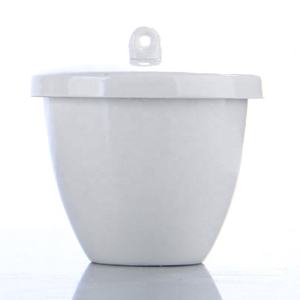
99% Alumina Porcelain Ceramic Crucible Circular Arc Ceramic Cup High Temperature Resistant Laboratory Container Ceramic Plates
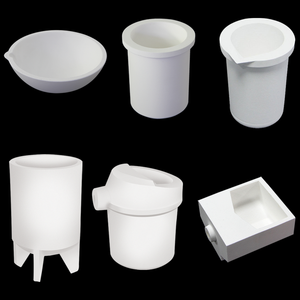
High Temperature 99.7% Al2O3 Alumina Ceramic Corundum Crucibles Industrial Ceramic Application Bending Cutting Processing
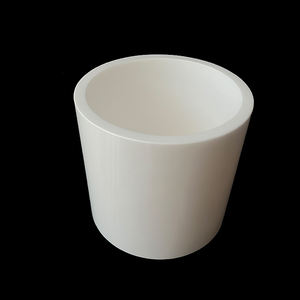
Ceramic Crucible D12*25*1.3mm
